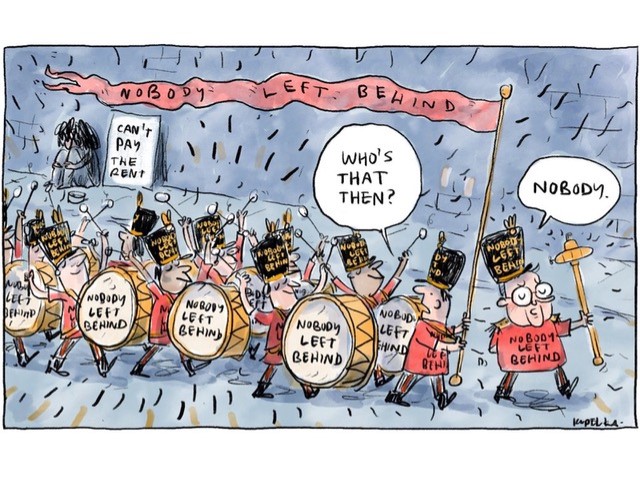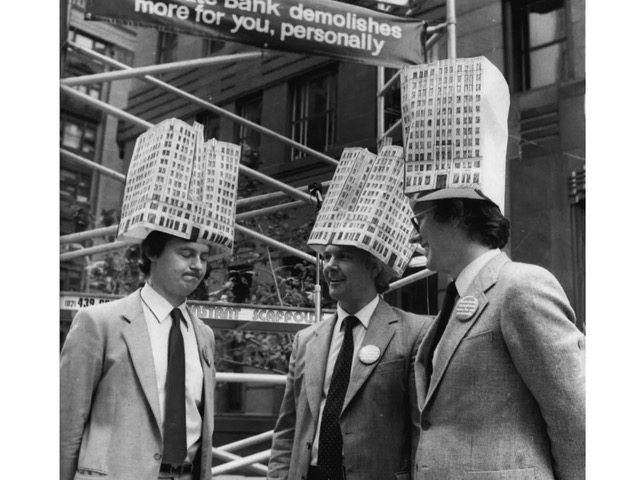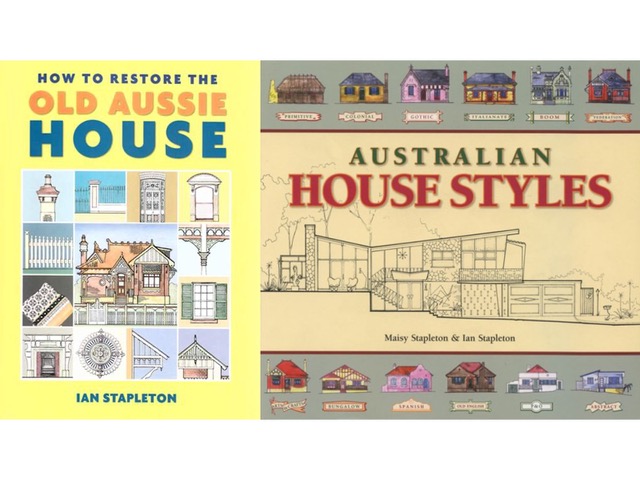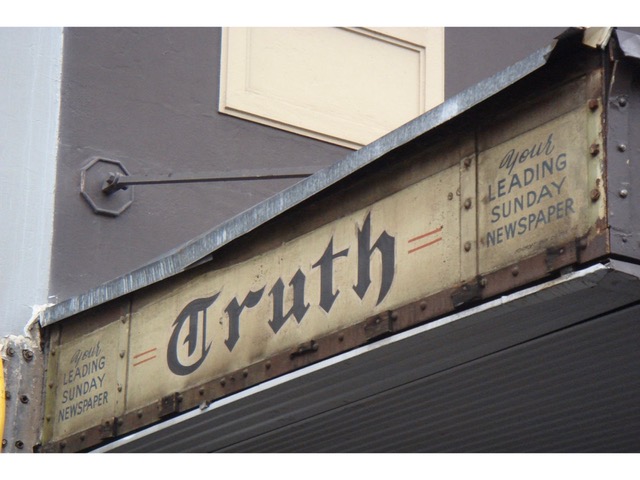The housing crisis explained in 500 words (or less)
The housing crisis debate is producing reams of digital argument (pardon the oxymoron), which is being driven into multiple, mind-crushingly awful cul-de-sacs. Given Another Thing is the home of pithy ‘archisplaining’, I’m offering a short, sharp, summary.

The housing crisis, as told by an architect
Our households are divided into equal thirds: owners, purchasers and renters. Owners, mostly ‘boomers’, own one house outright and, on average, one other. Purchasers are buying a dwelling with a bank loan from one of the five most profitable banks in the world. Renters, working poor, socially waged and ‘millennials’ own nothing, paying unaffordable increases.
For fifty years boomers arranged everything in their favour: inner-city houses were bought with small deposit mortgages, fudged financials and initially low interest rates; inheritance taxes were cancelled to help hoard wealth to the family; bigger (but not necessarily better) houses were bought; negative gearing and capital gains tax discounts facilitated property investments, encouraged by banks, and paid for by renters.
For forty years, federal governments have obsessed about mortgage rates as the one and only housing policy, leaving the rest to the market. Purchasers, with increasingly expensive loans, buy the world’s biggest houses from some of the wealthiest developers, mostly in outer suburbs. Increasingly indebted to the big banks, foregoing avocado on toast, they hope one day to join the owners.
For thirty years, all governments, state and federal, have abandoned renters. Supply, constrained by NIMBY councils and land development, lags population growth, so house prices spiral upwards without constraint, benefitting boomer owners, putting pressure on would-be purchasers but denying any form of home ownership for the lowest third. Social housing is sold by the States and not replaced; waiting lists balloon.
This is where we are at now. The ‘lucky country of the fair go’ becomes the one of the worst in the OECD for inequality. The Australian dream of home ownership has been sunk by greedy boomers and their allies, in control at the banks, the property markets, and the big political parties, ensuring all the tax breaks favour owners.
A manipulated supply shortage (we actually have more houses than households) sees stonking rises in values, which further weaponises inequality. Owners get wealthier, without adding any community value. Purchasers are doubly damned: faced with uncontrolled price rises, they get crushed by rising interest rates, engineered by an uncaring RBA. Rising house values breeds unconstrained rental increases, which see renters turfed out, by owners gouging wealth windfalls, now supercharged by Web-based holiday rentals. Homelessness beckons for many like never before.
There is no very little hope. The once progressive Labor party is led by an honorary boomer, who grew up in social housing but now owns three properties. Their federal housing policy, at one hundredth of a submarine, is risible. Housing takes years to build, and there is no urgency. Even if the Teals and Greens win the balance of power in 2025 (increasingly likely), it will take decades to cure the policy corruption of the last fifty years.
456 words for nerds. Oh BTW, the cartoon, by John Kudelka in the Saturday Paper on 6 May 2023, is my choice for the year’s best. A picture tells a thousand words, so it’s twice as good as my piece.
Vale Ian Stapleton, architect emeritus on heritage

Sad to record that Ian Stapleton, great architectural advocate for our built heritage, passed away this week. He researched, designed and oversaw the restoration and renovations to many of our most important buildings including the Woolloomooloo Finger Wharf (into hotel and apartments), the Walsh Bay Redevelopment, the Sydney GPO (into a hotel with a revitalised public realm), the Officials’ houses at Port Arthur Tasmania, and Don Bradman’s childhood home in Bowral.
After schooling in Orange NSW and architecture at the University of Sydney in the early 70s, he worked for a short while at the NSW Public Works Department before joining Fisher Lucas, where he began his stellar career as heritage expert. He became director of Clive Lucas Stapleton, later Lucas Stapleton Johnson, where he was tireless in both in practice and on committees, including as president of Australia ICOMOS from 1992 to 1994.
A somewhat reticent man, he could be moved to intense passion on occasion, including protesting and speaking in a demonstration against the demolition of the State Bank (former Rural Bank) in Martin Place. He is seen on the left in the image above, together with Dick Rowe and Howard Tanner on 25 March 1982. His efforts came to nought, as a year later it was demolished to be replaced with one of Sydney’s most nondescript high rises. Beautiful to bland. He hated that.
Although known for his work on large and prestigious civic buildings, he was vitally interested in the history of the common house, writing several essential texts as guides to architects and the layperson alike, including the seminal Australian House Styles together with wife Maisy. See the bookends below.
This is personal for me as I was a classmate for six years at Usyd, where he met and married Maisy, and I well remember how daughter Alice would be placed in her crib under the drafting tables in the aptly named ‘transient building’ on campus, or in lectures by the inspirational Jennifer Taylor. He was outstanding, in a brilliant cohort, which included another heritage expert, and later teacher, Trevor Howells, who died several years ago. To lose one heritage luminary is careless, to lose another is a downright tragedy (sorry Oscar).
Tesla numbering its plates

My Tesla friends, not many but vocal, dispute last week’s assertion that Tesla owners love personalised number plates as harbingers of the decline of the ICE vehicle. Well here’s some evidence, gleaned from the passenger seat when I lost my license for taking photos of number plates whilst driving. Any angle that suggests otherwise is purely coincidental. Or the car is parked.
Bookends: The books of Ian and Maisy Stapleton

Given Ian Stapleton’s passing I can’t resist going to the library and finding some of the books that he, and Maisy, produced. I did a quick check of the net, and Flannel Flower Press - it’s time for another reprint please. These never go out of date, that’s the value of heritage. And heritage architects.
Sign Off: you can uncover the Truth in Melbourne.

If you can’t handle the Truth, it can be uncovered on an awning in Melbourne, seen in July 2006.
Reference: A&D Another Thing week 24/2023
Tone Wheeler is an architect / the views expressed are his.
Long columns are Tone on Tuesday, short shots every Friday in A&D Another Thing.
You can contact TW at [email protected]

